Some days ago I came across this answer about the usage of the FFT
In the answer there's a piece of code like this:
w = np.fft.fft(data)
freqs = np.fft.fftfreq(len(w))
I read about the function fftfreq in the numpy documentation (here) and i found that it returns an array with the following content:
f = [0, 1, ..., n/2-1, -n/2, ..., -1] / (d*n) if n is even
f = [0, 1, ..., (n-1)/2, -(n-1)/2, ..., -1] / (d*n) if n is odd
In my case, the d var is equal to 1 and n is an even number.
So my question is: what is exactly the aim of fftfreq?
I was wondering if it was a sort of a triangular window function.
